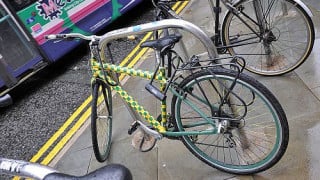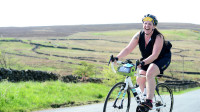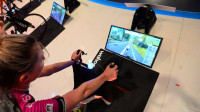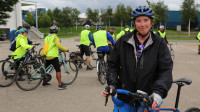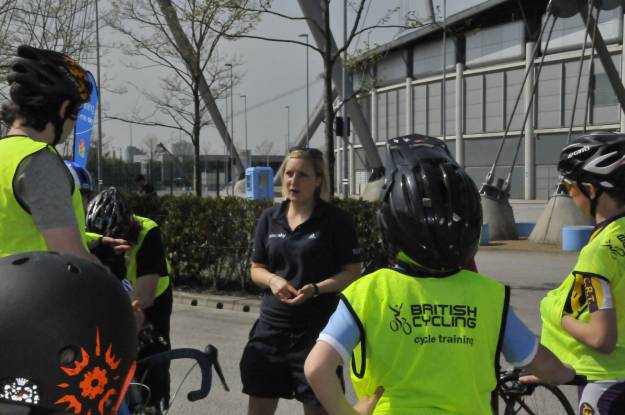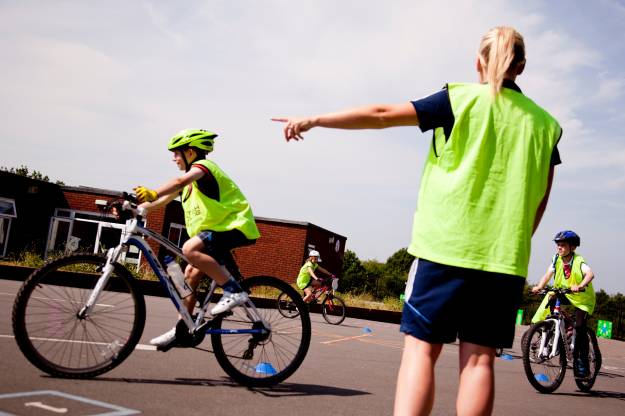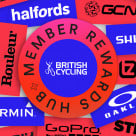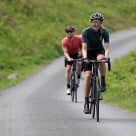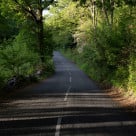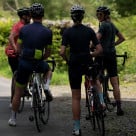Follow britishcycling.org.uk on |
Make the most of your daily commute
Commuting by bike is not only a great way to reduce your personal CO2 emissions, but also help improve your fitness, reduce your weight and have you arrive at work more alert and ready for the day ahead.
While only a select few riders are fortunate enough to be paid to ride and recover, the rest of us have to do something else in between to pay the mortgage and feed the family. With the work/life balance constantly squeezed, time for training can be hard and while turbo training can be an effective training tool, it isn't our hobby, bike riding is.
This is where the cycle commute fits in.
Commuting by bike may be quicker than by car and is a great way of ensuring effective training becomes a part of the daily routine within the timescale of a normal working day. Here, British Cycling's Coaching and Education team provide a few tips on how to get going and make the most out of your time on the bike.
Preparation
Firstly, take a stash of clean clothes, towels, baby wipes (for those without a shower at work) etc into work ahead of the commute either by driving one day or getting a lift - you need a rest day in the week anyway, so this is the perfect opportunity to get kitted out.
Secondly, make sure that your bike is well maintained (you will still need to carry a puncture repair kit and basic tools) and that you are wearing highly visible clothing that is suitable for the day's weather. Be aware that your actions on your bike may affect the way motorists treat other cyclists, so ensure that you comply with the Highway Code, ride in a safe manner and don't skip red lights. Check out some tips on road position by clicking here.
Finally, don't see your commute as just a means to an end. With a little bit of forethought you can use those annoying red lights to your advantage as you tailor your journey to meet your training needs!
Here is how...

1. Standing Starts
You may have to stop and start regularly because of traffic, junctions or red lights. Don't see this as a bad thing as riding harder between obstacles and getting a rest when you stop is an excellent way of improving your fitness.
As well as working the legs, standing start accelerations are great for muscle power as they require effective use of the core muscles and arms. The focus is how quickly you can get the bike moving from a standing start; therefore you should time your first pedal stroke with the use of the upper body by pulling on the handlebars, rather like a skier driving out of the start gate. This effort will support any racing discipline; from MTB to track, to road and can be applied to your commute out of every junction.
Red lights can make you fitter!
2. Rolling accelerations
Bike racers, regardless of discipline, also need to be able to accelerate quickly when already at speed. A good time to do this would be when riding at your ‘normal' steady pace and accelerate through traffic lights (when on green). This will be especially useful if you think the lights might be about to change!
 3. Speed drills
3. Speed drills
Speed is the ability to pedal quickly. A typical cyclist may ride at between 60 -90 revolutions of the pedals per minute (RPM) and to develop your speed, use very small (easy) gears and aim to pedal as quickly and smoothly as possible. This means pedalling in smooth circles and not bouncing up and down in the saddle, therefore requiring effective recruitment of your upper body and core muscles to keep your torso still. You can do this anytime in your commute by selecting an easy gear and trying to pedal super-smooth and super-quick.
4. Flying Efforts
Speed can also be developed by using a method applied to track sprinters training. Track sprinters practice flying laps to help develop leg speed, using the steep banking to assist the acceleration. Similarly, you can use any downhill, such as the down slope off a bridge to do the same thing. By the way, sprinting to the top of the hill or bridge would also be a good power workout to help with those starts out of the traffic lights.
5. Observation
Bunch racing requires good observation skills, as does safe commuting. Perfecting your observation skills will enable you to make good effective checks over your shoulder to see if there are any cars, especially useful when changing lanes or turning. Top tip here is to drop the shoulder you are aiming to look over and ensure you keep your handlebars straight as you move your head (avoiding turning your bars with your head!). Aim to keep riding at the same pace too (don't slow down).
In summary:
• Carry as little stuff with you as possible by taking clothing etc into work in advance.
• Increase duration and intensity of your rides progressively, especially if you are new to cycling.
• If you live quite a distance from work, consider cycling one way in the morning and getting public transport home and then reverse this routine the following day.
• Think about varying your effort between days. For example, if you ride hard one day, take it easier the next day. Your workouts will be most effective if you have adequate rest.
• Think about the demands of your chosen cycling event and consider how you can integrate these as a training focus into your commute.
• You should always consider other road users and anticipate hazards.
• Make sure you have a high carbohydrate snack such as a banana or energy bar for the end of your ride.
British Cycling is proud to provide a comprehensive Coach Education Programme for people who want to coach. To ensure that there is something of interest for everyone, we offer various pathways, tailored for individual coaches and their needs. Whether you are interested in coaching beginners or performance-orientated riders, we can help you realise your coaching goals through our coaching pathway.
For more information on any of British Cycling's Coaching Courses follow the links to the left. Alternatively, download a leaflet by clicking here

